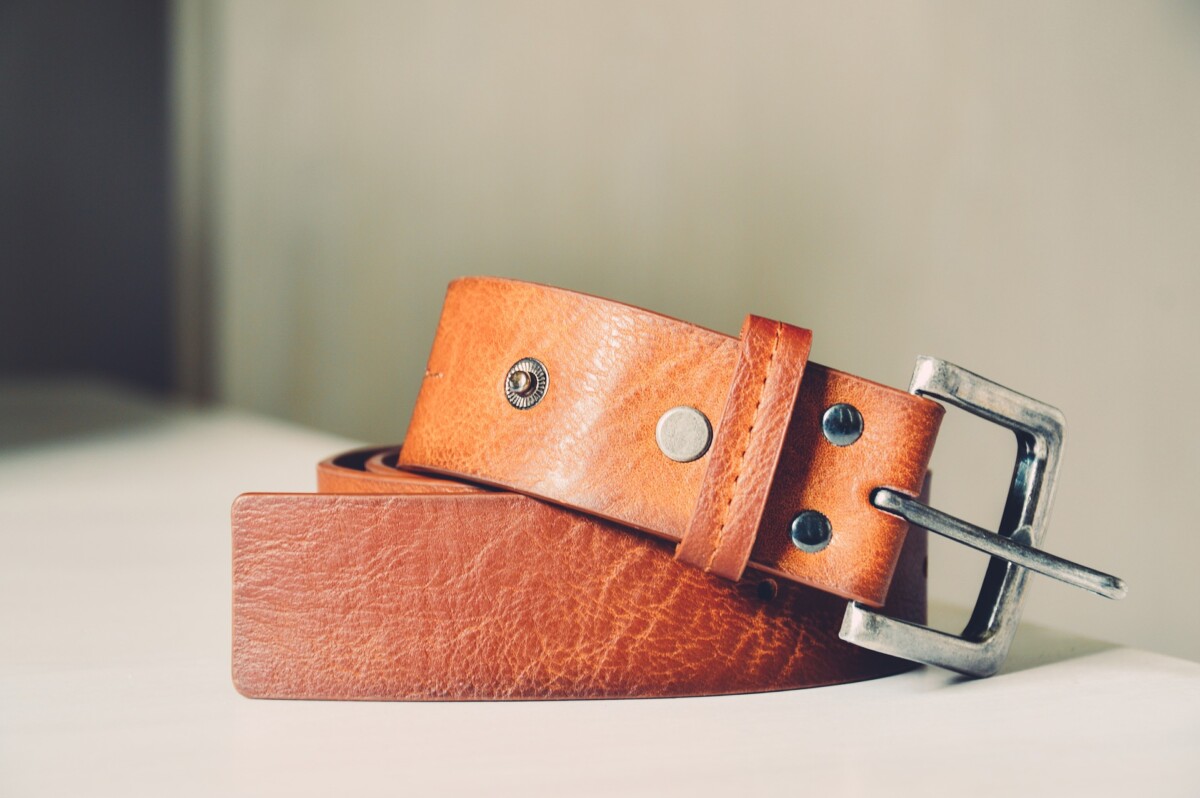Leather Straps: Everything about The Material and Production

A genuine leather belt is an accessory that should be in the wardrobe of both men and women. A high-quality thing can not be cheap, but it will last for many years. Good skin tends to age beautifully and acquire a unique texture. But here you need not make a mistake with the choice and buy a belt from raw materials with a good dressing.
Table of Contents
The material
Saddlery leather is widely used in sewing belts, bracelets, scabbards, cases, trunks, tablets, and high-strength bags. It is used to produce horse harnesses, saddles, various elements of protective equipment, and technical and medical products. Such material is distinguished by its large thickness, high strength, increased resistance to deformation, abrasion, and exposure to various liquids, along with a special ability to maintain its properties for long service life.
High-quality raw materials of heavyweight, which include cattle hides, as well as horse, pig, and camel skins, are used for the production of saddlery leather. The dressing of such material can occur without tanning, or be carried out by vegetable or combined methods. The skin is characterized by high strength, large thickness, high resistance to deformation, abrasion, and exposure to all kinds of liquids. It also can maintain its properties for a long time of operation.
The thickness of this skin varies and depends on the size, type, and age of the animal, as well as the category. You can see one of the best examples on leffler.com.au
Tanneries produce several categories of saddlery leather: whole skin, half-leather, shabrack, collar, and floor. And if everything is clear with whole skins, then the other terms require a little explanation.
- Half-skin is a whole skin but divided into two equal parts along the line of the animal’s back.
- The collar is the neck part of the skin. It is characterized by a smaller thickness compared to the shabrack, the presence of wrinkles and folds on its surface.
- The floor is a narrow and long part of the pelt from the abdominal part. It is the thinnest and loosest.
The purpose, characteristics, and properties of saddlery leather are primarily determined by the belonging of the pieces to individual sections of the skin based on the method of its cutting. According to the totality of indicators of quality, strength, and durability, the most valuable area is considered to be a shabrack, which is cut out of the dorsal part of the skin of cattle. Regardless of the type of dressing, it is the shabrack that has the densest, smoothest, and uniform structure, as well as the best strength characteristics. Saddlery shabrack is used for the manufacture of skin products of increased wear resistance and is often chosen by craftsmen when sewing highly specialized and especially durable things.
Classification of the material
Saddlery leather according to the generally accepted classification is usually divided into soft and hard. The hard type includes saddlery, from which a horse team and various elements of human equipment are made, the soft type is a raw material.
Hard saddlery leather
In the production of saddles and horse harnesses, saddlery has been widely used. It is also excellent for making cases, weapon holsters, scabbards, and semi-rigid trunks. There are such varieties of skin: smooth or rifled. It can also be painted or have a natural shade.
Soft leather
A softer, but extremely resistant to stretching, raw skin is not subjected to tanning during the dressing process and is one of the most durable natural leather varieties. A distinctive feature of its increased plasticity is why the raw material is irreplaceable in those situations when a certain profile must be given to the belt in advance. This process is called “planting”. In addition to belts with the highest tensile strength, wristbands and wear-resistant bags are made of rawhide, in which you can carry heavy objects.
Technical leather
A separate subclass of saddlery leather, such material is intended for the production of driving and driving belts, seals and gaskets, cuffs, as well as for parts of various machine tools, industrial mechanisms, and aggregates. It has various properties depending on the purpose. For drive belts, for example, the skin must be very elastic, dense, uniform in thickness, and have great tensile strength. Technical skin in the medical industry is used in orthopedics, corsets, bandages and prosthetic covers are made from it. Such material is a rigid or flexible but at the same time quite durable material, which is obtained by combining specific tanning of thick cattle skin. At certain industrial enterprises, specialized products for labor protection are made of technical skin. Such products include all kinds of aprons, mittens, gloves, elements of protection of vital organs and the head.
Technologies for the production of leather belts
The traditional version is a three-layer belt, where two outer layers are made of genuine leather and a lining material inside. The most high-quality and durable belt is obtained if you use natural skin as a lining.
There are three technologies for connecting layers:
- Gluing is the easiest way to connect the layers using special adhesives.
- Stitching is a more reliable method than gluing. Often, stitching includes the decorative finishing of the product. After all, dense seams of different shades look interesting and original on accessories in the casual style.
- Combined-stitching and gluing. The most reliable and widespread technology for connecting layers. As a rule, it is used in the production of products made of expensive skin, where pigskin is used as a lining. These are solid, voluminous, and durable belts with high-quality accessories.
There are two main ways of making leather belts: manual and machine. Let’s take a closer look at each one.
Methods of production
Manual method. It requires a high level of skill, because each strip should be perfectly smooth, and the edges should be smooth. Due to the low productivity, the cost of such products is high, so manual work makes sense when making exclusive models to order.
Machine production. 95% of belts are produced with the help of special equipment. In large workshops or factories, even the simplest and smallest tasks are performed by machines for people.
For example, up to ten different machines can be used to produce one belt:
– a machine for smooth and even rounding of the edges;
– edge coloring machine;
– machine for installing accessories, rhinestones, and jewelry;
– manual press or automatic.
So, what is saddlery leather has the following characteristics: strength, wear-resistance, and durability. Therefore, for sewing bracelets, belts, dog collars, backpacks, cases, tablets, briefcases, and bags, give preference to it.


